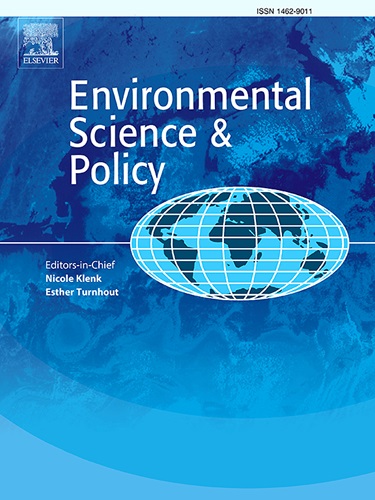The underexplored potential of the arts in environmental social sciences
IF 5.2
2区 环境科学与生态学
Q1 ENVIRONMENTAL SCIENCES
引用次数: 0
Abstract
During the last two decades, there has been a growing focus on art-science collaborations in the field of environmental social sciences. Often still seen as an end-of-pipe tool for education and communicating scientific ideas, here, we call for broadening the arts and science interdisciplinary space, emphasising the role of art in knowledge co-production and participatory research in environmental social sciences. In particular, our perspective shifts focus towards the underexplored potential of the arts in contributing to the scientific inquiry itself, that is, the role the arts can play in the scientific study and analysis of the world or its views. To this end, art is presented here as a means for eliciting diverse forms of knowledge, including experiential and lay knowledge, and for advancing more participatory, decolonial, and culturally sensitive social-environmental research practices. Through carefully selected examples using written and visual arts, this paper explores how art is used and proposes a framework to understand the role it has taken during the scientific knowledge production process. This paper concludes that art has great potential to enhance scientific inquiry by opening the space for alternative forms of knowledge that are usually marginalised or are simply more difficult to access through traditional means. We suggest that this newly produced social capital has important implications for the construction of more just, relevant and legitimate social and environmental policies.
艺术在环境社会科学中未被发掘的潜力
在过去的二十年中,环境社会科学领域的艺术与科学合作日益受到关注。在这里,我们呼吁拓宽艺术和科学的跨学科空间,强调艺术在环境社会科学的知识合作生产和参与性研究中的作用,艺术通常仍被视为教育和交流科学思想的最后工具。特别是,我们的观点将重点转向艺术在促进科学探究本身方面未被开发的潜力,也就是说,艺术在科学研究和分析世界或其观点方面可以发挥的作用。为了达到这个目的,艺术在这里是作为一种手段来引出各种形式的知识,包括经验和外行知识,并推进更多的参与性,非殖民化和文化敏感的社会环境研究实践。通过精心挑选的使用书面和视觉艺术的例子,本文探讨了艺术是如何被使用的,并提出了一个框架来理解它在科学知识生产过程中所扮演的角色。本文的结论是,艺术通过为通常被边缘化或通过传统手段更难以获得的其他形式的知识打开空间,具有增强科学探究的巨大潜力。我们认为,这种新产生的社会资本对构建更公正、相关和合法的社会和环境政策具有重要意义。
本文章由计算机程序翻译,如有差异,请以英文原文为准。
求助全文
约1分钟内获得全文
求助全文
来源期刊

Environmental Science & Policy
环境科学-环境科学
CiteScore
10.90
自引率
8.30%
发文量
332
审稿时长
68 days
期刊介绍:
Environmental Science & Policy promotes communication among government, business and industry, academia, and non-governmental organisations who are instrumental in the solution of environmental problems. It also seeks to advance interdisciplinary research of policy relevance on environmental issues such as climate change, biodiversity, environmental pollution and wastes, renewable and non-renewable natural resources, sustainability, and the interactions among these issues. The journal emphasises the linkages between these environmental issues and social and economic issues such as production, transport, consumption, growth, demographic changes, well-being, and health. However, the subject coverage will not be restricted to these issues and the introduction of new dimensions will be encouraged.
 求助内容:
求助内容: 应助结果提醒方式:
应助结果提醒方式:


